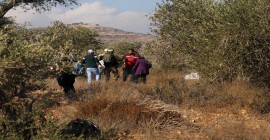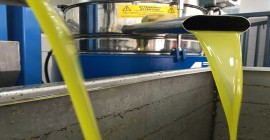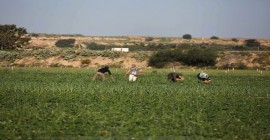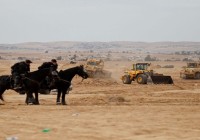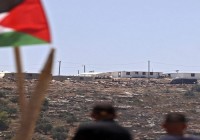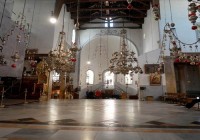Hebron Grape Profits Reach $35 Million per Year
Grape Vineyards in Hebron cover around 22 thousand acres of land, forming a strategic economic source of income for the Hebron Governorate in the South of the West Bank.
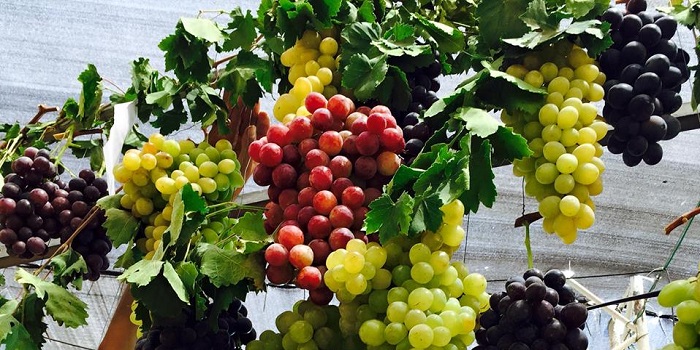
Ansar Tomizy – Palestine Economy Portal Translated by: Tamara Barakat
Figures published by the Ministry of Agriculture reveal that the Governorate of Hebron produces 27 thousand tons of grapes annually. Part of this harvest is sold for eating, while another part is used in the production of a variety of grape by-products such as dibs, antabeekh, I'nabieh (jams) and others. Additionally, grape vineyards produce 3 thousand tons of edible grape leaves.
The total income of the grape harvest for farmers has reached $35 million dollars annually.
7500 Families Live on Grape Harvest Income
According to Osama Jarrar, the Director of the Guidance Services Department in the Hebron Services Directorate, despite the decline in the size of planted agricultural areas, which used to be 40 thousand acres, grape production has not decreased due to the Ministry of Agriculture’s measures to develop this sector. It has introduced 400 thousand new grape seedlings, as well as a variety of enhanced types of grapes.
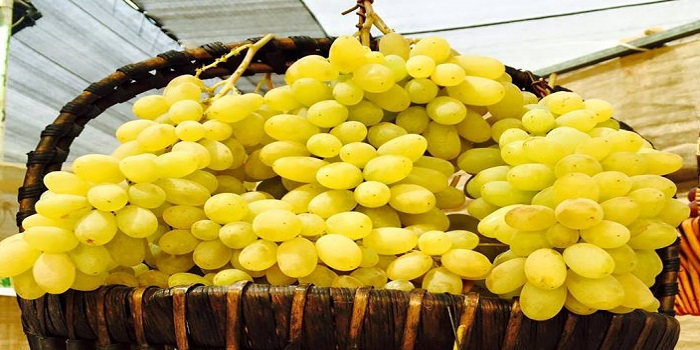
Jarrar also says that 7500 Palestinian families from Hebron depend on the grape harvest as their main source of income.
Fathi Abu Ayyash, the Director of the Fruit and Grapes Council, explains that nowadays, the prices of grapes have improved much more than before. The price of one kilo of grapes used to be 9 agoras; today, however, it reaches 2.5 NIS. Still, this does not cover the expenses incurred by the farmers. The Council strives to reach a satisfying price that can adequately support the farmers.
Hebron and its town and villages, such as Halhul, Beit Ummar, Beit Einoun, and Sa’eer, are the most productive areas of grapes. Hebron is also known for the diversity in the kinds of grapes it produces including Jandali, Bairouti, Dabouki, Zeini, Hamadani, Marawi, Fheisi, Halawani, Beitouni, Shami, and Darawishi grapes.
Hebron: Top Consumer of Grapes
Jawad Al Sayyed, the Chairman of the Chamber of Commerce, reveals that according to the Chamber’s statistics, 40% of the grape harvest is consumed in Hebron itself, while 35% is consumed by the rest of the Palestinian governorates, including Gaza, and around 25% is exported to Israel, Jordan, and other Arab countries. He also says that the grape sector is going in a positive direction, and that it is expected to continue growing as farmers and relevant parties are becoming more aware of its strategic importance.
Women Projects
What also adds to the significance of the grape sector is that it has given the opportunity to a lot of women to start their own projects of producing grape by-products. These projects are characterized by their economic feasibility, and they constitute a source of good income for these women. Some of these by-products include dibs, juice, jam, molasses, raisons, and fruit roll (malban).
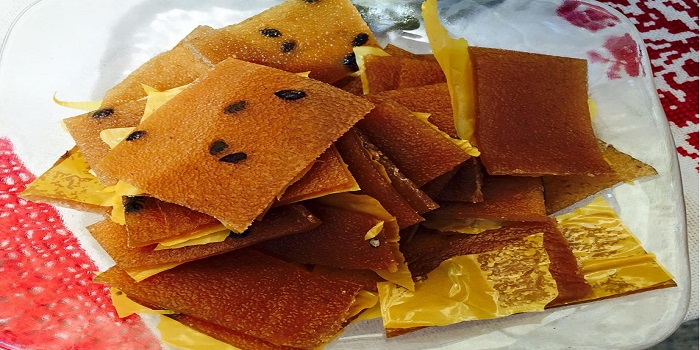
Poor Marketing and Confiscation of Land
Despite all of the positive statistics and numbers regarding the grape sector, farmers suffer from several problems, such as poor marketing of their products, technical problems resulting from the changes in the weather, and the lack of support provided to the Palestinian farmers. Additionally, they suffer from the Israeli Occupation’s practices of land confiscation, prohibition of planting the land, and destruction of grape vineyards.
The Grape Festival: An Annual Tradition
The specialized parties in Hebron, headed by the Chamber of Commerce, ensure that the Grape Festival is held every year. The purpose of this festival is to market and promote the local grape harvest and products. The festival attracts thousands of visitors. Farmers use this festival as an opportunity to promote and sell their grape products, as well as other Palestinian agricultural harvests, such as dates and guava.

